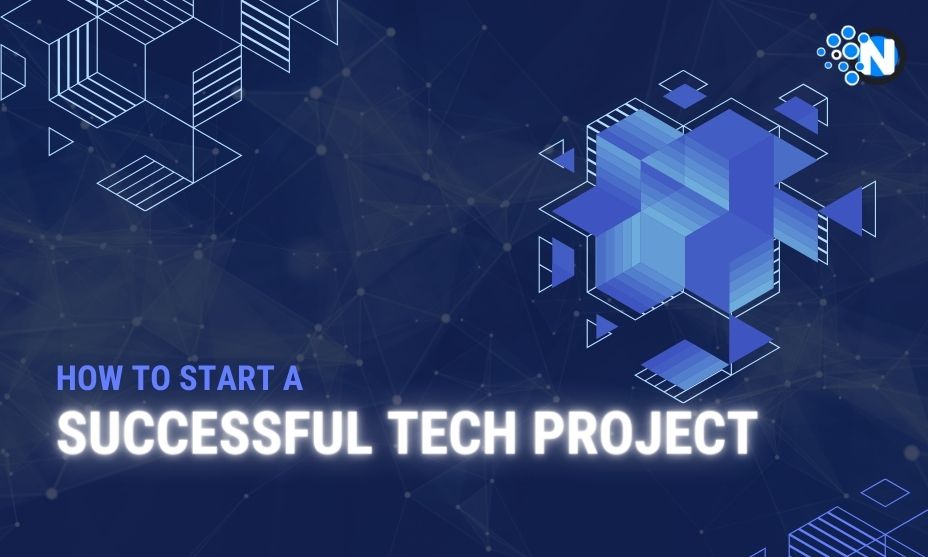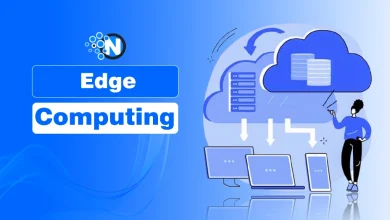How to Start a Successful Tech Project

In the fast-paced world of technology, starting a successful tech project can be an exciting but challenging endeavour. Whether you’re a seasoned entrepreneur or a newcomer to the tech industry, the key to success lies in meticulous planning, effective execution, and staying ahead of the curve.
This comprehensive guide will walk you through the essential steps and strategies needed to kickstart your tech project on the right foot.
1. Define Your Vision and Objectives
Like any great voyage, your tech project begins with a vision. What problem does your project solve, and what value does it bring to the market? Define your objectives clearly and set achievable goals. Your vision acts as the North Star, guiding your project throughout its development.
2. Market Research: Charting Your Course
Just as an explorer studies maps and landscapes, thorough market research serves as your compass. Dive deep into understanding your competition, target audience, and the needs of potential users. This profound knowledge should influence every decision regarding your project’s direction.
3. Assemble Your Dream Team
A tech project is a collaborative journey. Seek out experts in relevant fields, from developers and designers to marketers and project managers. A diverse, dynamic team can provide fresh perspectives and innovative solutions.
4. Budget Wisely
Every successful expedition requires proper financial planning. Estimate your project’s costs realistically, encompassing development, marketing, and overhead expenses. Investigate funding options like investors, crowdfunding, or loans.
5. Create a Detailed Project Plan
Meticulous planning is your best ally. Craft a project roadmap featuring clear timelines, milestones, and deliverables. Decide on the development methodology best suited to your project, whether it’s Agile or Waterfall. A comprehensive plan keeps everyone aligned and ensures consistent progress.
6. Prototyping and Development
Begin with a rapid prototype or a Minimum Viable Product (MVP). These early versions act as compass checks, helping you gather invaluable user feedback and refine your project. Embrace an iterative development process, constantly improving based on real-world insights.
Read Also: Ways To Leverage AI and Automation in Web Development Projects
7. Prioritize User-Centered Design
User experience reigns supreme. Make user-centered design a top priority, focusing on usability and accessibility. Regularly test your product with real users and incorporate their feedback.
8. Address Security and Privacy
In the digital realm, security and data privacy are non-negotiable. Implement robust cybersecurity measures and ensure compliance with data protection regulations. Safeguarding your users’ information builds trust.
9. Develop a Strong Marketing Strategy
Even the most innovative product requires effective marketing. Forge a robust online presence, invest in content marketing, and optimize for search engines (SEO). Social media strategies can also help you connect with your audience.
10. Launch and Learn
The launch itself is only the beginning. Analyse data, collect user feedback and be prepared to change. Long-term success is based on constant improvement.
11. Measure Success
Identify key performance indicators (KPIs) and use data to track your progress. Analyse user behaviour and make data-driven decisions. Measuring success allows you to stay on course and adapt when needed.
12. Scaling Your Project
Plan for growth from the start. Be prepared to scale your project as it gains traction. Expanding to new markets or adding new features can be the next steps in your journey.

13. Embrace Challenges and Adapt
Challenges are inevitable, but they are also opportunities for growth. Learn from failures and stay adaptable. A resilient approach is crucial in the ever-changing tech landscape.
14. Celebrate Milestones
As you progress, don’t forget to celebrate your achievements along the way. Milestones serve as markers of progress and motivate your team. Whether it’s reaching a development phase or hitting a user engagement target, taking a moment to acknowledge these victories fosters a positive project environment.
15. Foster Effective Communication
Open and effective communication is the lifeblood of any successful tech project. Ensure that your team members collaborate seamlessly, sharing ideas, updates, and challenges. Establish regular meetings, use project management tools, and maintain transparency to keep everyone aligned.
16. Manage Risks
In the unpredictable terrain of tech, risks are a constant presence. Develop a risk management strategy that identifies potential issues and outlines mitigation plans. This proactive approach minimises the impact of unexpected challenges and keeps your project on course.
17. Stay Agile and Adaptive
Tech landscapes evolve rapidly, and adaptability is key. Embrace an agile mindset, where change is seen as an opportunity for improvement. Be ready to pivot your strategy if market conditions or user feedback demand it. Flexibility often separates successful projects from those that falter.
18. Seek Feedback Continuously
User feedback is invaluable. Don’t wait for formal testing phases to gather insights; seek feedback continuously. Engage with users through surveys, beta testing, and user forums. Their perspectives will help you refine your project and align it with user expectations.
19. Plan for Scalability
As your project gains momentum, be prepared for scalability. Ensure that your infrastructure can handle increased traffic, and that your team can expand to meet growing demands. Scaling should be a smooth transition rather than a disruptive event.
20. Measure and Optimize
Constantly measure your project’s performance against established KPIs. Analyze user data, user engagement metrics, and conversion rates. Use these insights to make informed decisions and optimize your project for better results.
21. Be Customer-Centric
Never lose sight of your customers. Engage with them, listen to their needs, and incorporate their feedback into your project’s ongoing development. A customer-centric approach builds loyalty and encourages user retention.
22. Learn from Failure
In the tech world, failure is not the end; it’s a stepping stone to success. Embrace failures as learning experiences. Analyse what went wrong, adjust your strategy, and apply those lessons to future endeavours. Many tech giants today have risen from past setbacks.
23. Stay Current with Tech Trends
The tech landscape is ever-evolving. Being ahead of the curve positions your project as an innovative force rather than a follower. SO, keep reading relevant news magazines and tech blogs to stay ahead of the latest tech trends.
24. Iterate and Innovate
Innovation should be an ongoing process. Encourage your team to brainstorm, experiment, and propose new ideas. Regularly iterate on your project to stay competitive and deliver fresh value to your users.
25. Stay Committed to Your Vision
Amidst all the challenges and changes, remain committed to your project’s original vision and objectives. Your unwavering dedication will inspire your team and keep your project on a steady course.
Conclusion
A software development firm is a powerhouse of innovation, where lines of code transform into digital solutions. These companies are the architects of the digital age, crafting software that shapes industries, improves processes, and empowers businesses. Launching and managing a successful tech project is an exhilarating journey filled with opportunities and challenges. By meticulously following these steps, you not only ensure a strong start but also set the foundation for long-term success. Remember that in the dynamic tech landscape, adaptability, resilience, and a commitment to continuous improvement are your allies on this exciting voyage. With the right plan, a dedicated team, and a clear vision, your tech project has every chance to thrive and make a significant impact in the digital world.




